Quick access: 2022 2020 2018 2017 2016 2015 2014 2013 2012 2011 2010 2009 2008 2007 2006 2005 2004 2003 2002 2001 2000 1997 1996 1995 1994 1992 1991 1990 1989 1988 1987 1986 1985 1984
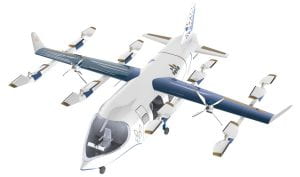
Balto (2022)
Title: eVTOL Air Taxi for Passengers with Reduced Mobility (PRM)
Challenge: Design an electric vertical takeoff and landing (eVTOL) aircraft that accommodates passengers with a broad spectrum of mobility difficulties or other disabilities for urban air mobility (UAM) missions.
Team: Abraham Atte, Carlota Bonnet, Zelin Hu, Howon Lee, Derek Safieh (team leader), Jeremy Louis Seeyave, Eleni Sotiropoulos-Georgiopoulos, Naveen Raj Srinivasan, Shreyas Srivathsan, Siobhan Whittle
Result: 3rd place
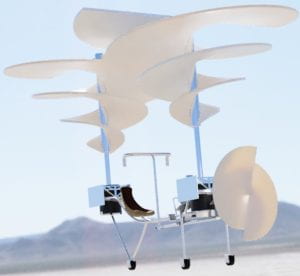
Il Mulinello (2020)
Title: Leonardo’s Aerial Screw: 500 Years Later
Challenge: Design a VTOL vehicle based on Leonardo’s Aerial Screw concept, studying and demonstrating the consistency of its physics and potential feasibility.
Team: Carlota Bonnet, Alex Markov, Alex Moushegian (team leader), and Milad Mozayyani
Result: 2nd place
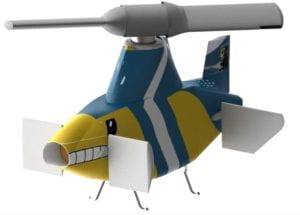
KnightFlyer (2018)
Title: A Reconfigurable VTOL Aircraft
Challenge: Design a Group 3 size unmanned VTOL aircraft that achieves high-speed forward flight (relative to current VTOL aircraft) and efficient hover through the use of novel reconfigurable propulsive and lifting devices.
Result: 2nd place
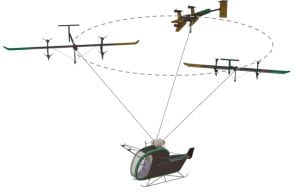
SWARM (2017)
Title: 24 Hour Hovering Machine Conceptual Design
Challenge: Design a heavier-than-air flying machine that could hover for 24 hours over three stations 1 km apart, carrying a human-sized payload of 80 kg.
Result: 2nd place
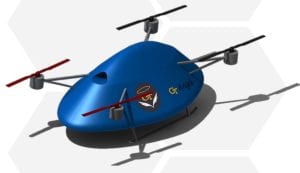
Angel (2016)
Title: Air Launched Unmanned Disaster Relief Delivery Vehicle
Challenge: Design an unmanned rotorcraft, capable of deployment from the ramp of an in-flight C-130J cargo airplane. The rotorcraft needed to arrest its descent and transition into its own flight mode to deliver supplies to remote areas from a hover and subsequently return to a recovery base.
Result: 2nd place
Stork (2015)
with the Middle East Technical University
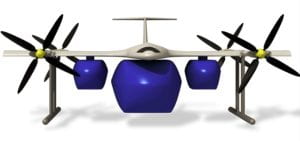
Title: Distributed Logistics in an Urban Setting Using Small Unmanned Aerial Vehicles
Challenge: The competition for “Distributed Logistics in an Urban Setting Using Small Unmanned Aerial Vehicles” provided challenging tasks for undergraduate student teams to complete a vehicle design, while graduate student teams completed a systems design. In addition, there was an optional task for undergraduate and graduate teams for planning and conducting a hardware validation activity.
Result: 2nd place
XV-58 Manta (2014)
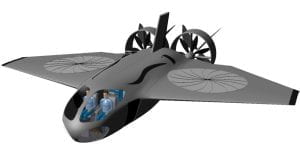
Title: X-VTOL
Challenge: Design an experimental Vertical Take-off and Landing (VTOL) aircraft — an X-VTOL — which is intended to establish key performance attributes to enable transformational mission capabilities on an objective aircraft. These include efficient sustained hover, long-range cruise, high useful loads and sustained flight at high speeds.
Result: 1st place
STERNA (2013)
Title: The HealCopter
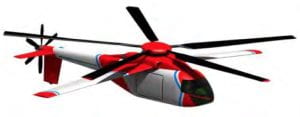
Challenge: Design a helicopter aimed at rescuing victims of a natural disaster with the capability to reach the scene rapidly with a large payload that is mission-equipped to operate safely.
Team: Alexander Forbes, Charles Gayagoy, Michael Roberts, Thomas Maschmeyer, Vatsal Vakharia, Ben Wagner, and Nathon Woelke
Result: 2nd place
Advanced Racing Complex (2012)
with the University of Liverpool
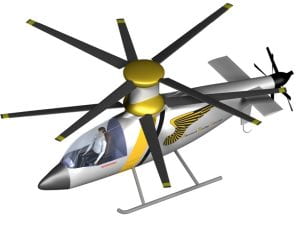
Title: Rotary Winged Pylon Racer
Challenge: Design a purpose built helicopter to race on a prescribed pylon course. Graduate students were required to submit a simulation package video.
Team: Sylvester Ashok, Dennis Garza, Alex Gavrilovski, Mike Jones, Romain Lamour, Ritu Marpu, Morgan Nowak, Frank Patterson, Manmohan Prasad, Venkatakrishnan Shankar, Emma Timson, and Vatsal Vakharia
Result: 2nd place
Odyssey (2011)
with the University of Liverpool
Title: Multi-Mission Aircraft
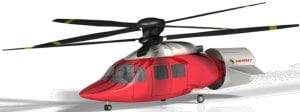
Challenge: Design a multi-mission vertical lift system that optimally blends the competing requirements of three very different missions — Search and Rescue, Insertion and Resupply. The aircraft must be reconfigurable.
Team: Sylvester Ashok, Raymond Beale, Bahnu Chiguluri, Michael Jones, Jeewoong Kim, Jonathan Litwin, Marc Mugnier, Jaikrishnan Vijayakumar, and Xi Zhang
Result: 2nd place
Thor (2010)
Title: LIFT! More LIFT!
Challenge: Design a technology demonstrator multi-lift system such that two rotorcraft could be cooperatively operated and lift 75% more payload than either aircraft. Graduate students were also challenged to design and conduct a flight test program for their system.
Team: Daniel Akins, Nicholas Austin, Corey Dillingham, Keeryun Kang, Stephanie Kersten, Aravind Krishnan, Zachariah Morford, Robert Schlein, Linyu Zhang
Result: 2nd place
Peregrine (2009)
with the University of Liverpool
Title: Non-Conventional Rotor Drive
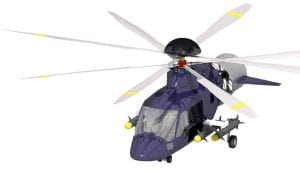
Challenge: Design a new, non-conventional rotor/drive system for a helicopter, starting from a current, in-service design with MTOW between 3500 and 5500 kgm, and including all necessary subsystems that will endow the new design with improved performance in terms of speed, range, payload, endurance and noise signature.
Team: Hyun Lee, Brian Wade, Marc Dalziel, Mike Osmon, Robert Scott, Etienne Baer, Alex Robledo, Jae-Hwa Shin, Philip Perfect, Sylvester Ashok, Sourabh Deshpande, and Vivekanand Pitchaimani
Result: 1st place
Athena (2008)
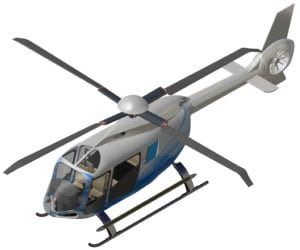
Title: Advanced VTOL Concept “SMART – COPTER” Minimizing Energy Consumption
Challenge: Design an advanced VTOL “SMART-COPTER” concept capable of operating from an unprepared area and which minimizes energy consumption throughout the operational envelope
Team: Jacquelyn Banas, Thomas Cooper, Jonathon Crim, James Liu, John Martin, Joe Minor, F. Ersel Olcer, Nick Powell, Alexander Robledo, Roosevelt Samuel, Ngoc Anh Vu, and Brian Wade
Result: 2nd place
Cypher, Dragonfly and Barracuda (2007)
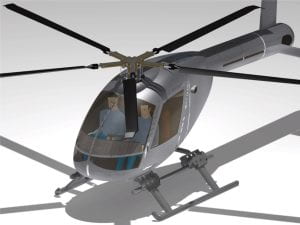
Title: Advanced Deployable Compact Rotorcraft in support of Special Operation Forces
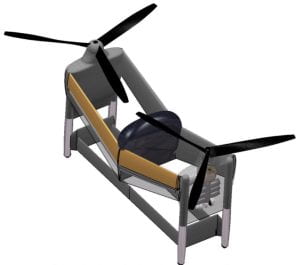
Challenge: Design an advanced manned VTOL Approach and Recovery Vehicle (ARV) that is capable of operating from a submersible vehicle in support of Special Operations Forces, and an advanced Unmanned Escort Vehicle (UEV) that is capable of supporting the operations of the ARV.
Team: Joseph Davis, Jeremy Bain, Michael Duffy, Jeff Staub, David Whyte, Mark Moore, Tim Mosig, Cedric Justin, Wei-En Li, and Doug Smith
Result: 1st place
Rambler (2006)
Title: 2-Place Turbine Training Helicopter
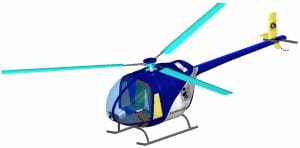
Challenge: Design a two-seat, single-engine turbine training helicopter with operating characteristics representative of the world’s turbine helicopter fleet, while being cost-competitive with current piston-engined training helicopters, along with the conceptual design of a low-cost turbine engine.
Team: Matthias Hoepfer, Bernard Laurendeau, Sumit Mishra, Kshitij Shrotri, Apinut Sirirojvisuth, Stephen Suhr, Tobias Theel, Lan Wu, and Jaesuk Yang
Result: 1st place
Heavy Lift Tandem (2005)
Title: Heavy Lift VTOL Aircraft
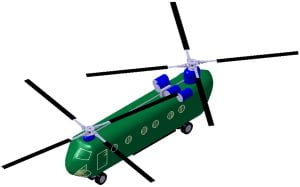
Challenge: Develop the conceptual design of a modern military Heavy Lift VTOL aircraft. The aircraft had to be designed to operate from existing naval ships and be able to transport a 20-ton FCS combat-ready vehicle.
Team: Aaron Pridgen, Ludvic Baquie, Alex Moodie, Mandy Goltsch, Byung-Young Min, Sameer Hameer, Dominic Scola, Vivek Kaul, and James Rigsby
Result: 2nd place
Mountain Rescue Helicopter (2004)
Title: Design for Certification- Mountain Rescue Helicopter
Challenge: Develop a helicopter specifically designed for high altitude rescue operations. The aircraft had to be certified for single pilot, day/night operations with cruise speeds of at least 145 knots.
Result: 2nd place
VTOL Urban Disaster Response Vehicle (2003)
Title: VTOL Urban Disaster Response Vehicle
Challenge: Design a VTOL urban disaster response vehicle for high rise firefighter deployment, rooftop occupant extraction, disaster command and control and other emergency response missions.
Result: 2nd place
Older competitions:
2002:
Challenge: Upgrade and remanufacture a 4-6 place turbine helicopter for commercial applications, that can operate at 140 Kt cruise speed and have a range of 400 nm.
Result: 2nd place
2001:
Challenge: Develop a VTOL platform with an innovative method of controlling the cyclic pitch of the rotor blades. Methods that do not depend upon the use of traditional swashplate mechanisms were sought.
Result: 2nd place
2000:
Challenge: Develop an autonomous rotorcraft for exploration of Mars. The mission was to be a proof-of-concept demonstration for rotary wing flight in the Martian atmosphere.
Result: 2nd place (Vehicle Design), 1st place (Propulsion System and Flight Computer Design)
1997:
Challenge: Develop the conceptual design of a VTOL aircraft which could serve as an armed escort for the V-22 high-speed rotorcraft.
Result: 1st place
1996:
Challenge: Develop a cost-effective, dedicated fire fighting rotorcraft that could best perform a 200 acre, 10 hour forest fighting job for the least overall cost.
Result: 1st place
1995:
Challenge: Design a UAV capable of extracting two people, delivering a payload capsule weighing up to 400 lbs., and equipped with video surveillance.
Result: 2nd place
1994:
Challenge: Design a VTOL system with dual-use applications as a civil transport and as a troop assault vehicle.
Result: 1st place
1992:
Challenge: Design a VTOL Package Express Aircraft.
Result: 1st place
1991:
Challenge: Design a High Speed VTOL
Result: 1st place (team A), 2nd place (team B)
1990:
Challenge: Design a remotely Piloted Surveillance Vehicle
Result: 1st place (team A), 2nd place (team B)
1989:
Challenge: Design a light utility helicopter
Result: 1st place (team A), 2nd place (team B)
1988:
Challenge: Design a heavy lift helicopter
Result: 1st place (team A), 2nd place (team B)
1987:
Challenge: Design a low Cost Tilt Rotor for Commuter Operations
Result: 1st place (team A), 2nd place (team B)
1986:
Challenge: Design a one Man Rotary-Wing Racer
Result: 1st place (team A), 2nd place (team B)
1985:
Challenge: Design a Sport Helicopter for Home Construction
Result: 1st place (team A), 2nd place (team B)
1984:
Challenge: Combat, Search and Rescue
Result: 2nd place
You must be logged in to post a comment.